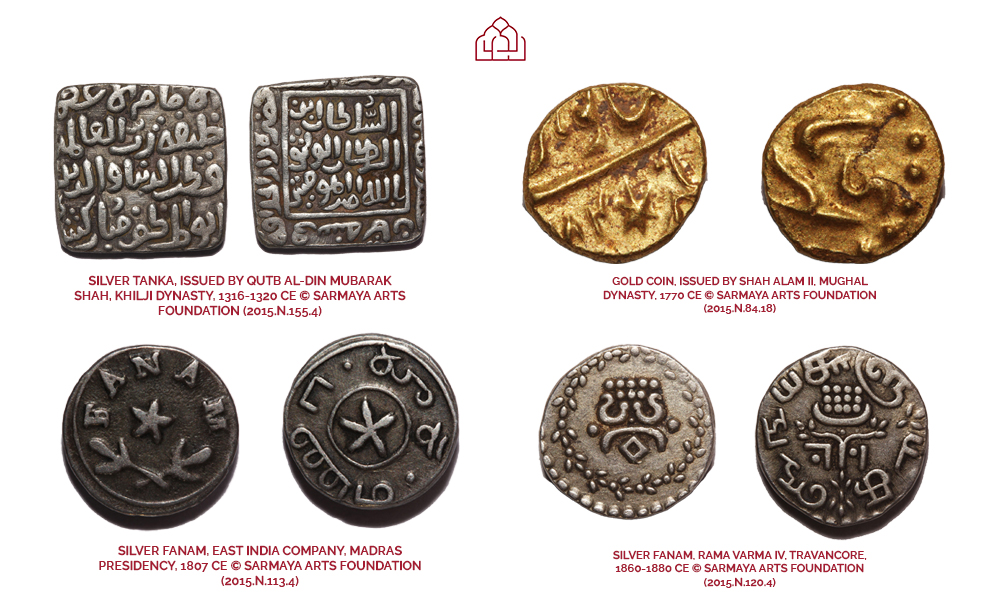
About 2,400 years ago, coins began to talk. And they never really stopped.
To be clear, money has always talked. But currency itself used to be more stoical. The earliest coins found on the Indian subcontinent were irregular pieces of metal, left blank or stamped with the insignia of an empire or guild. But as empires and trade networks expanded, there arose the need for standardisation in coinage. Coins needed to function as trustworthy ambassadors, carrying important political messages into lands familiar and foreign. This was made possible through the die-striking technique.
Not only were die-struck coins rich in information, they could also be works of art. Royals mints would employ sculptors, engravers, poets and calligraphers to create distinctive currency. On a 2-centimetre canvas, these artists would craft political identities, declare religious beliefs and project military might. Even today, coins are minted using the die-strike technique, albeit at a much larger scale.
What are die-struck coins?
A die-struck coin is made by striking a blank piece of metal, originally silver or copper, with a carved die. The die or mould was made of a heavier metal like iron or bronze, and it might have looked something like this:
This was an instant improvement over the two earlier techniques of coinage. It took less time that punching each symbol into the metal, as was the case with punch-marked coins. And it produced sharper details than was possible by pouring liquid metal into coin casts. By designing its own dies, the state could templatise its currency and prevent counterfeiting.
Some of the earliest die-struck coins found on the Subcontinent date to the 4th century BCE and were discovered in the ancient regions of Taxila and Ujjain. These were uninscribed copper coins. It’s with the Indo-Greek kings, who ruled over the Kabul Valley and north-western India in the 2nd-1st BCE, that we begin to see rich texts emerge on coins.
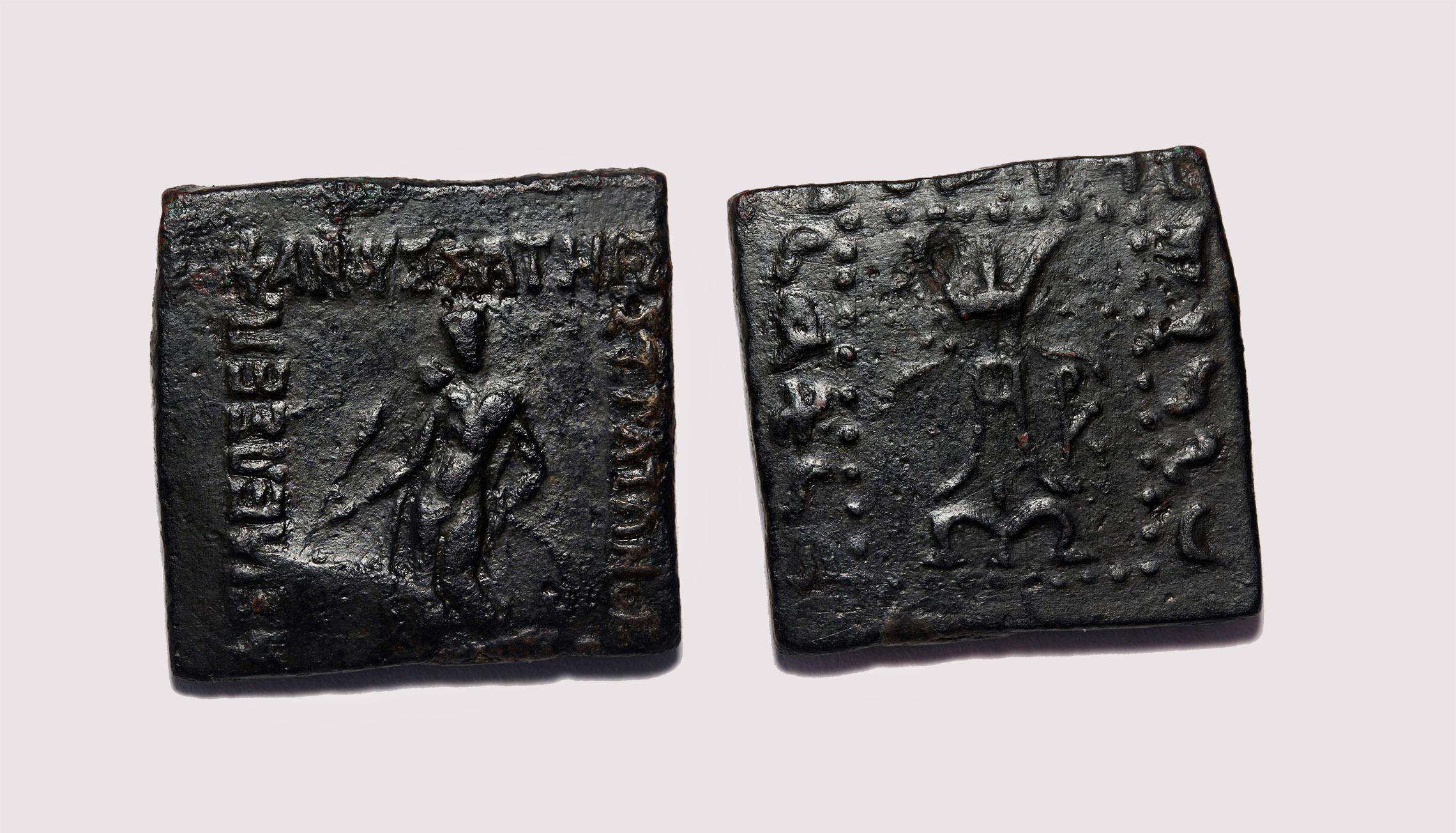
Bronze unit of Strato I, Indo-Greek ruler © Sarmaya Arts Foundation (2015.N.140.3)
Indo-Greek silver coins bore realistic portraits of the king, religious symbols, and writing in two scripts. Typically, the name of the issuer of the coin would appear in Greek on the obverse, and in Prakrit language and Kharosthi script on reverse. The artists who crafted coin dies are referred to as ‘celators’ and they were inspired by the Hellenistic sculptures of ancient Greece.
How were die-struck coins made?
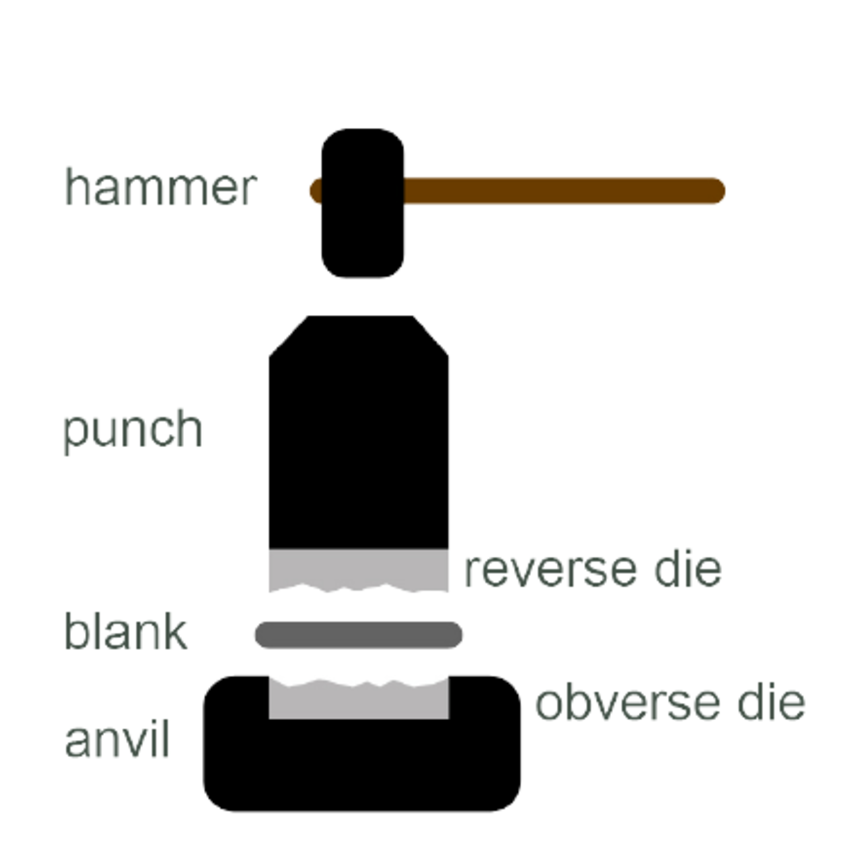
The striking of an ancient coin, image courtesy ‘On the Use of Computer Vision for Numismatic Research’, Zambanini, Sebastian & Kampel, Martin & Schlapke, Mario, 2008
A coin blank is heated and placed on an anvil, into which an obverse die is embedded. When it is struck with a hammer, the design gets imprinted on the metal. Coins could be single or double die-struck. To imprint on both sides at once, the blank is sandwiched between two dies and struck. Sometimes, coin dies would be tested on lumps of clay before they were used on metal. Die-struck coins are found in gold, silver, copper and various metal alloys.
In his famous treatise on statecraft, Arthashastra (2nd-3rd century BCE), Kautilya gives us a glimpse of the process of die-striking as it was practised in ancient India. He lists the items one might find in a counterfeiter’s workshop: various kinds of metals (loha), alkalis (kshāra), charcoal (angära), bellow (bhastra), clapper (sandãsa), hammer (mushtika), anvil (adhikarni), crucibles (musha) and dies with designs (bimba tanka). In the Sanskrit literature of the time, the term used for punch and die is ‘tanka’, and ‘ahata’ was the design embossed on a coin by striking it on the anvil.
How did die-struck coins change the game?
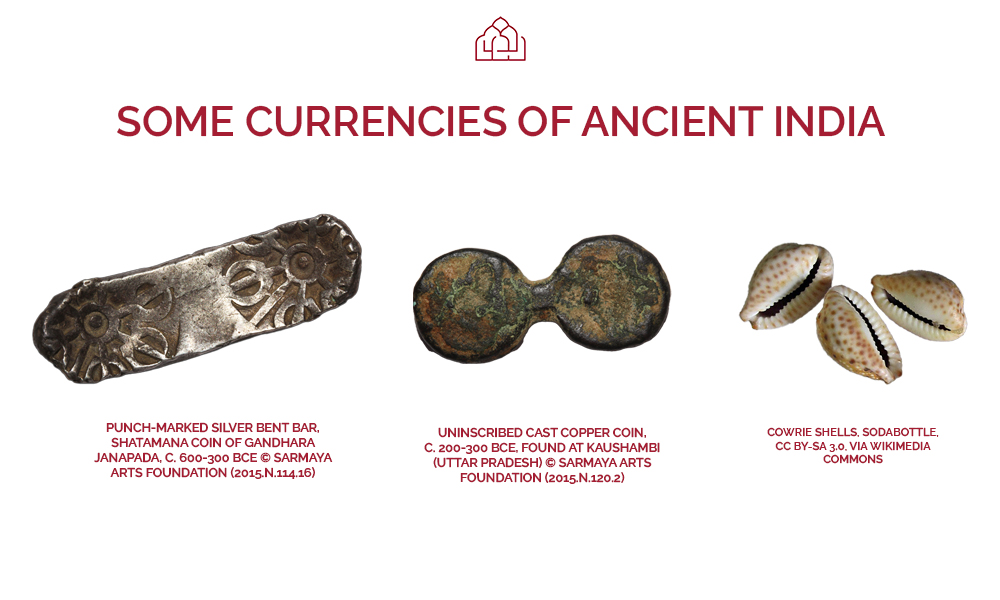
To the average citizen of ancient India, the advent of die-struck coinage made no difference at all. They continued to either barter for goods or used a variety of token money for smaller transactions. These included cowrie shells, leather money, leaf coins, fruit, seeds and pieces of cloth. For anyone who needed to travel and trade with foreigners, punch-marked coins and cast copper coins met the requirement for formal currency quite well. All of the above continued to circulate in the market, even centuries after royal mints began to roll out immaculate beauties like these:
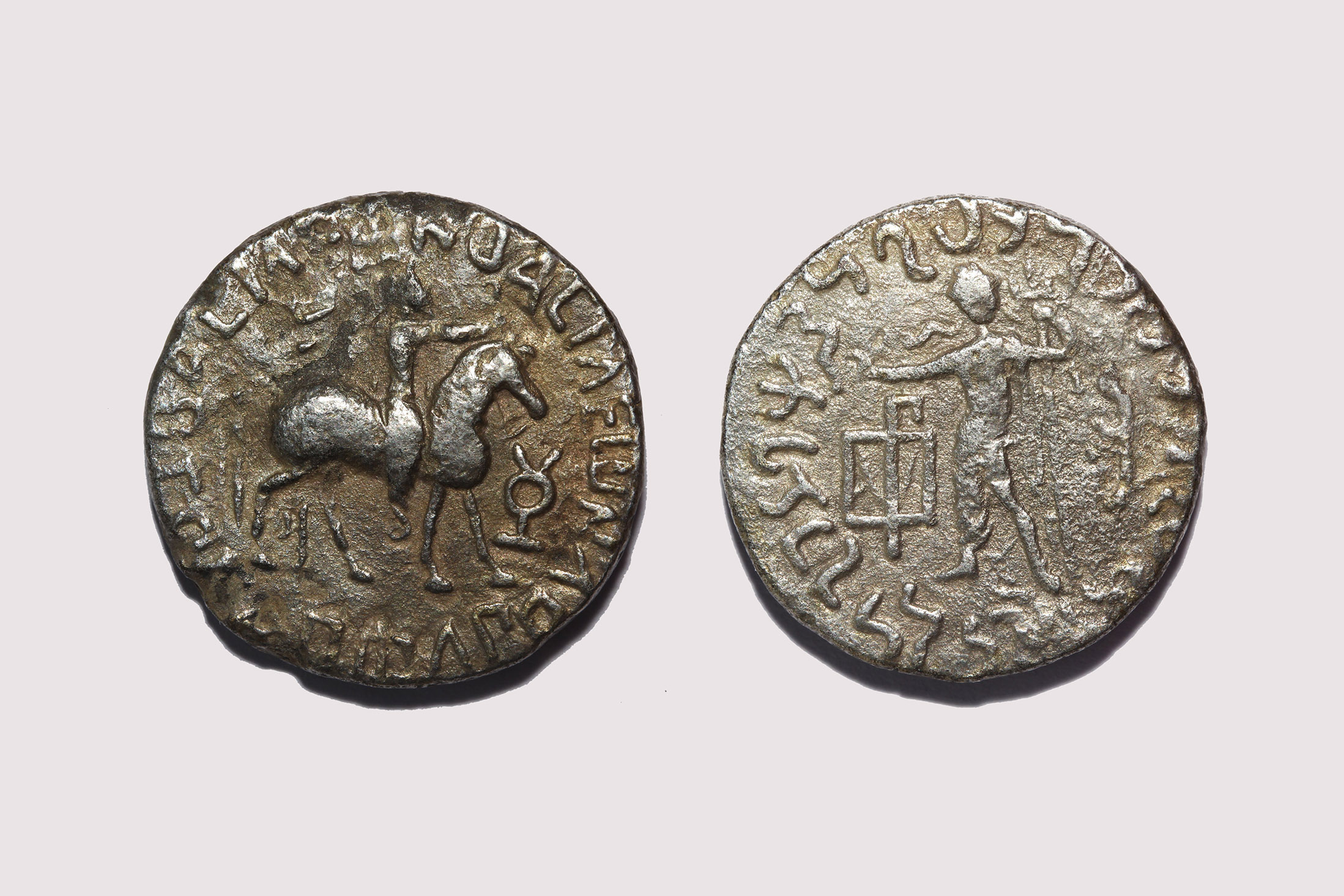
Silver Tetradrachm of Gondophares, Indo-Parthian ruler, 19 to 46 CE © Sarmaya Arts Foundation (2015.N.135.1)
It was in these royal mints that the disruption was immediately felt. Starting with the Indo-Greeks in the north-west, the technique travelled across the land. Die-struck coins were minted by the Kushanas, the Satavahanas, and the imperial Guptas, as well as by smaller indigenous, tribal and local rulers. In fact, much of what we know about these empires today is thanks to the coins they left behind.
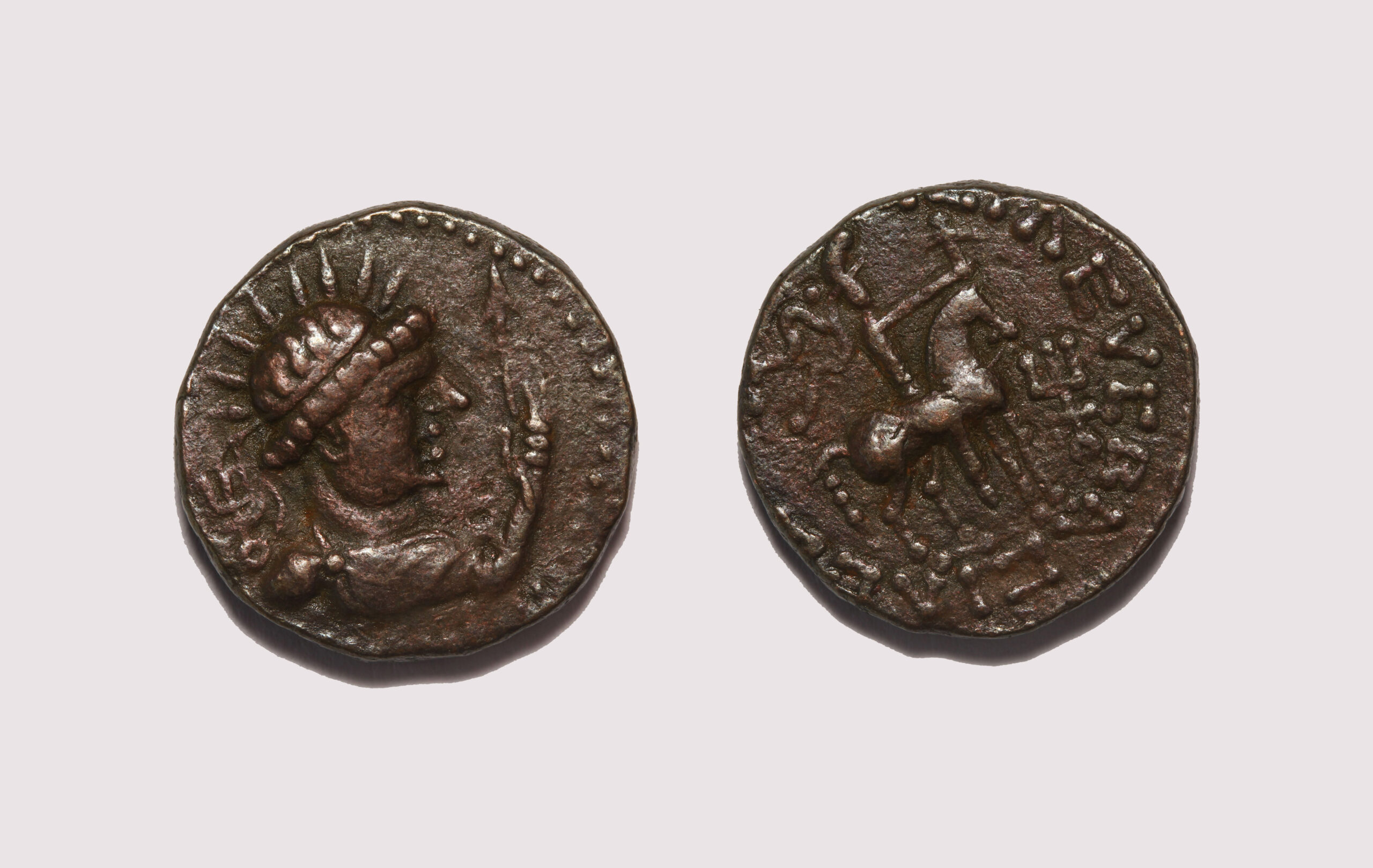
Copper Unit, issued by Soter Megas, Kushana dynasty, c. 80–90 CE © Sarmaya Arts Foundation (2015.N.121.6)
Which Indian dynasties minted the most beautiful coins?
While the Sarmaya archive houses many die-struck coins of extraordinary fineness, from the Indo-Greeks to the Vijayanagara rulers, two dynasties are especially noteworthy for pushing the envelope in terms of imagery and text: the Guptas (4th-6th century CE) and the Mughals (16th – 19th century CE).
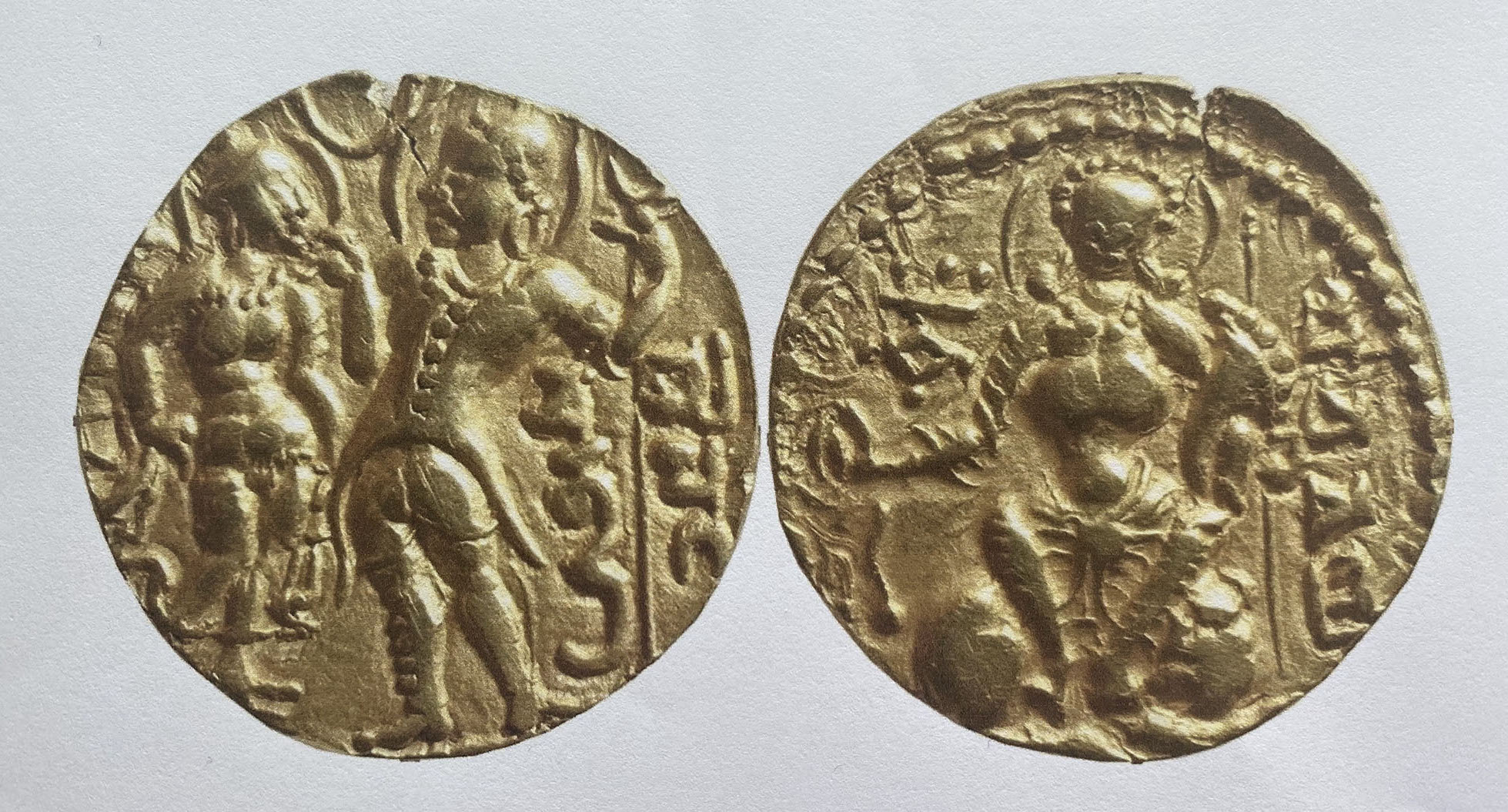
Gold Dinar, Samudragupta, Gupta Dynasty, 335–375 CE © Sarmaya Arts Foundation (2015.N.170.3)
The gold coins of the Gupta dynasty are considered to represent the zenith of artistic achievement in ancient Indian numismatics. Here’s how historian and numismatist BN Mukherjee describes them, “Gliding linearism, soft and often sensuous modelling of the body, and a subtle sense of movement characterize the figures appearing on coins of the Imperial Guptas, particularly on their well-executed gold coins.”
The craft of the die-sinker or die-maker was closely aligned with that of the engraver and sculptor. In an essay for the Marg publication, A Treasury of Indian Coins, on the art of Gupta coinage, historian and numismatist Ellen M Raven says, “…the die-sinkers must have been in close touch with the artistic trends of their age, which did not favour true-to-life imagery, but preferred idealized modelling of the human form. Nature supplied the norms for its representation: the face was to have the smooth shape of an egg, the forehead that of a bow, the eyes that of a lotus petal.”
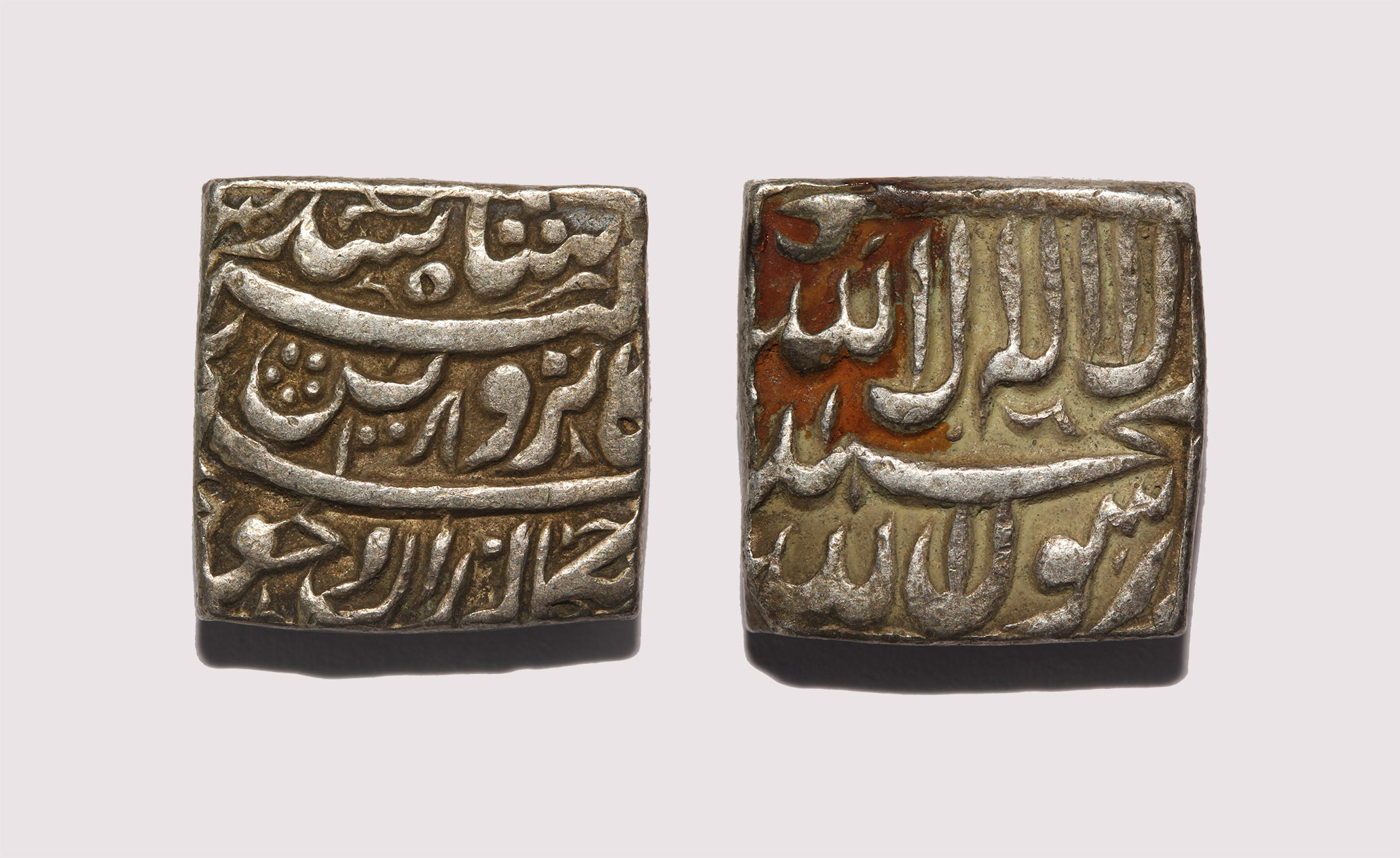
Silver Rupee Coin, issued by Akbar, Mughal dynasty, Bangalah Mint, 1600 C.E (AH 1008), double die struck © Sarmaya Arts Foundation (2015.N.64.1)
If the Guptas hired artists, the Mughals brought in poets. Starting with Akbar, emperors commissioned verses specifically for their coins. The royal mint turned into something of an atelier, the way that numismatist Prashant P Kulkarni describes it in A Treasury of Indian Coins: “First, a poet/composer was required to set the metre of the verse, then an artist to arrange the verse on the proposed flan of the coin. Following this, a highly experienced die-cutter was needed to give precise nastaliq effects to the engraving on steel. Finally, experts in metallurgy and technicians had to stamp the large ingots into perfect coin-like articles with the greatest care.”
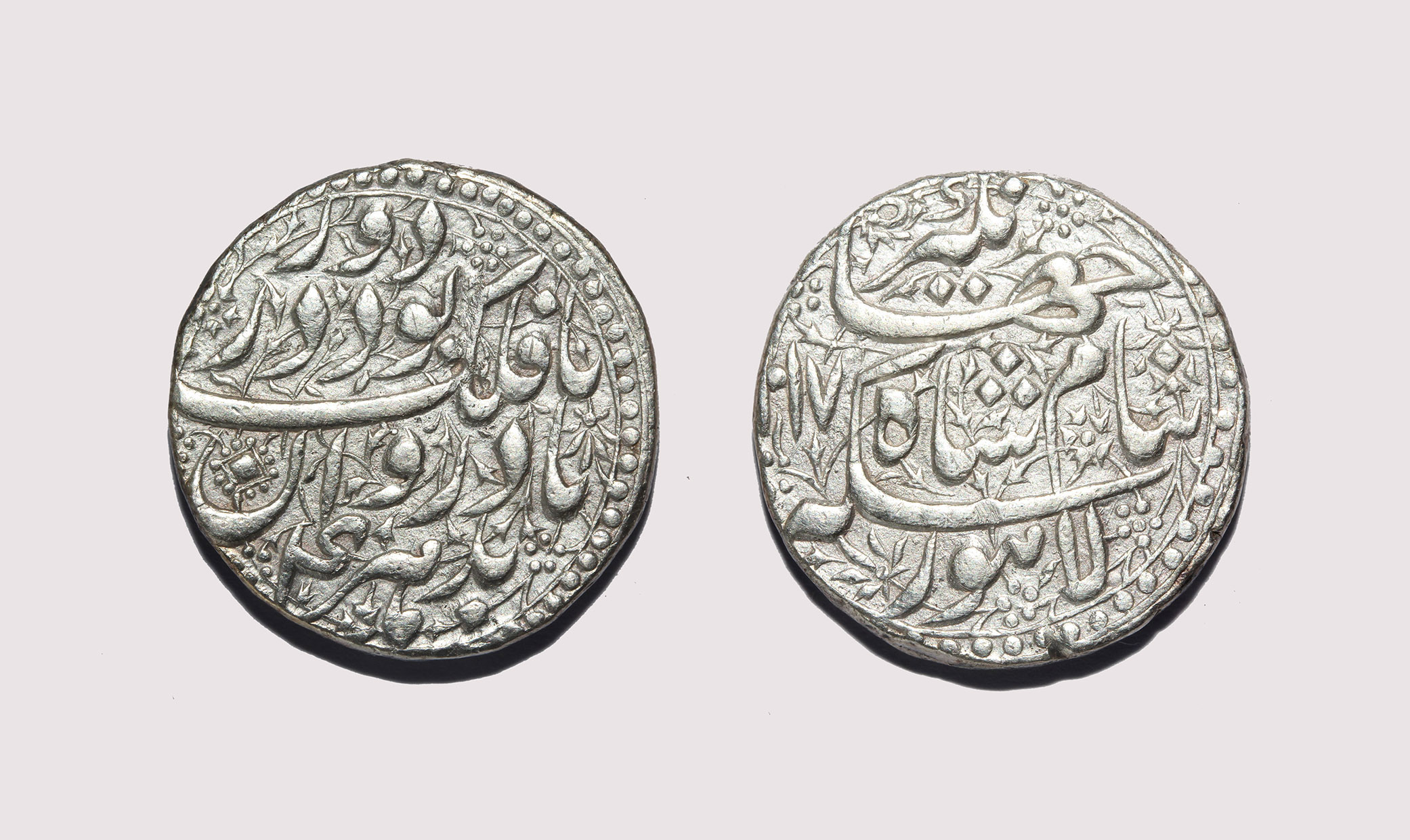
Silver Sawai Coin, issued by Jahangir, Mughal dynasty, Lahore Mint, 1608-1609 C.E. (AH 1017, RY 4), double die struck, © Sarmaya Arts Foundation. (2015.N.42.12)
Among the Mughals, Jahangir took a special interest in minting coins that reflected his inner aesthete. Apart from the special Zodiac series, which represented the 12 sun signs, he also introduced the couplet coins. These carried lofty and lyrical lines about the emperor, his reign, and once, memorably, about his most beloved wife.
View this post on Instagram
According to his autobiography, Tuzuk-e-Jahangiri, Nur Jahan once received the following verse written by her husband: ‘Ba hukma Shah Jahangir yafta sad zewar, Ba nam-e-Nur Jahan Badshah Begum zer’, which translates to ‘This gold hath a hundred beauties gained with the inscription of the name of Nur Jahan, the Badshah Begum’. The Sad Zewar couplet is found inscribed on coins issued in Nur Jahan’s name.
References
A Treasury of Indian Coins, edited by Martha L Carter, 1994, Marg Publications
On the Use of Computer Vision for Numismatic Research, Zambanini, Sebastian & Kampel, Martin & Schlapke, Mario, 2008
The Coinage of Ancient India, SR Goyal, 1995
A History of Ancient and Early Medieval India: From the Stone Age to the 12th Century, Upinder Singh, 2008



